Fiber for Health’s Sake!
Summarized from my notes on fiber from the books Eat to Live by Joel Fuhrman, MD and How to Not Die, by Michael Greger MD.
Did you know that fiber is a critical nutrient? That people who eat the most high-fiber foods are the healthiest?
- Fiber aids our body in absorbing nutrients from food
- Fiber slows down glucose (blood sugar) absorption
- It controls the rate of digestion
- It lowers cholesterol
- It feeds the healthy bacteria in our gut
- Fiber is also nature’s “broom”. It passes through our digestive system taking with it toxins, waste, unhealthy fat and cholesterol particles out of our body
- Fiber intake from food is a good marker of disease risk.
Fiber is naturally concentrated in only one place: whole plant foods. When we eat mostly natural plant foods (beans, vegetables, fruits, whole grains and seeds) we get large amounts of different fiber.
Fiber and brain health
Fiber helps control cholesterol and blood sugar. This reduces the amount of artery-clogging plaque in our brain’s blood vessels. High-fiber diets may also lower blood pressure, reducing the risk of brain bleeds.
Though stroke is considered an older person’s disease, risk factors may begin accumulating in childhood. It is SO important to teach our children to eat more plant foods!
[su_expanding_quote_book alignment=”full” source_author=”Michael Greger, MD” source_title=”How to Not Die” full_quote=”Low fiber intake early on is associated with stiffening of the arteries leading to the brain – a key risk factor for stroke. One more apple, an extra quarter cup of broccoli, or just two tablespoons of beans a day during childhood could translate into a meaningful effect on artery health later in life.” short_quote=”Low fiber intake early on is associated with stiffening of the arteries leading to the brain”]Fiber and heart health
High fiber foods help reduce inflammation, blood pressure and LDL (bad) cholesterol.
By preventing the buildup of cholesterol in our bloodstream, we can help prevent atherosclerosis in our coronary arteries—the leading cause of death in the United States.
[su_expanding_quote_book alignment=”right” source_author=”Joel Fuhrman, MD” source_title=”Eat to Live” full_quote=”High-fiber foods offer significant protection against both cancer and heart disease. I didn’t say fiber; I said high fiber foods. It has been adequately demonstrated in hundreds of observational studies that diet does offer protection from cancer at multiple sites, including the colon. A high-fiber intake is a marker of many anti-cancer properties of natural foods, especially phytochemicals.” short_quote=”High-fiber foods offer significant protection against both cancer and heart disease.”]Fiber and Cancer
High fiber intake appears to reduce the risk of cancers of the colon and breast, diabetes, heart disease, obesity and premature death in general.
The standard American diet is dangerously deficient in fiber. Americans currently consume about 25% of calories from animal foods and another 62% from highly processed refined carbohydrates. Fiber deficiency can lead to many health problems such as hemorrhoids, constipation, varicose veins, and diabetes. It is also a cause of cancer. Less than 3% of Americans meet the minimum daily recommendation for fiber.
[su_expanding_quote_book alignment=”full” source_author=”Michael Greger, MD” source_title=”How to Not Die” full_quote=”Analysis of a dozen beast cancer control studies found lower breast cancer risk associated with indicators of fruit and vegetable intake and high breast cancer risk associated with high saturated-fat intake. According to these studies, the more whole plant foods you eat, the better it is for your health. Every twenty grams of fiber intake per day was associated with 15 percent lower risk of breast cancer. A compilation of ten cohort studies on breast cancer and fiber intake came up with similar results, a 14 percent lower risk of breast cancer risk for every twenty grams of fiber intake per day.” short_quote=”Every twenty grams of fiber intake per day was associated with 15 percent lower risk of breast cancer, the more whole plant foods you eat, the better it is for your health”]There are two different kinds of dietary fiber: insoluble and soluble.
- Soluble fiber slows down digestion by attracting water and forming a gel-like substance once digested. It’s found in foods like oats, nuts, flaxseeds, beans, lentils, peas, and some fruits and vegetables like berries and carrots. Soluble fiber helps with weight loss because it slows the process of food emptying from our stomach and makes us feel full for longer after eating.
- Insoluble fiber tends to speed up digestion by adding bulk tostool (basically helping relieve constipation and allowing easy bowl movements). It’s found in whole grains and most vegetables.
What to Do?
Eat a wide variety plant foods (beans, vegetables, fruits, whole grains and seeds)
For More Empowerment
Why Is Fiber Good For You? And How To Get Enough Fiber!
9 Tips You Can Begin Using Today to Get More Fiber in Your Diet
Are You Eating a High-Fiber Diet?

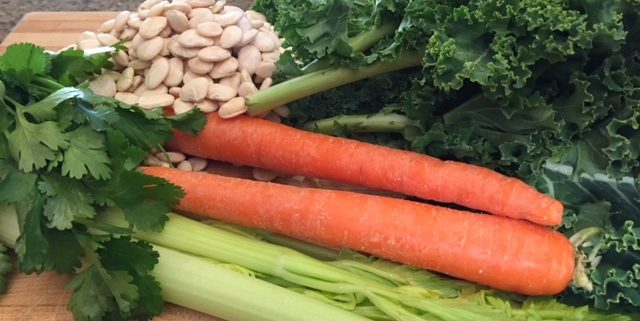
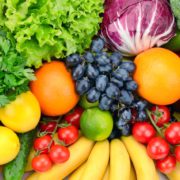
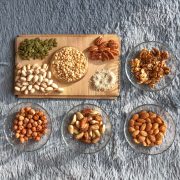
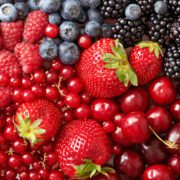
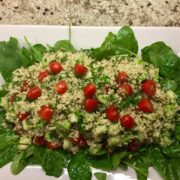
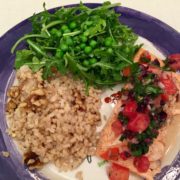
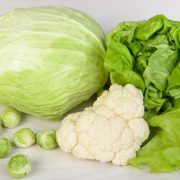




Leave a Reply
Want to join the discussion?Feel free to contribute!